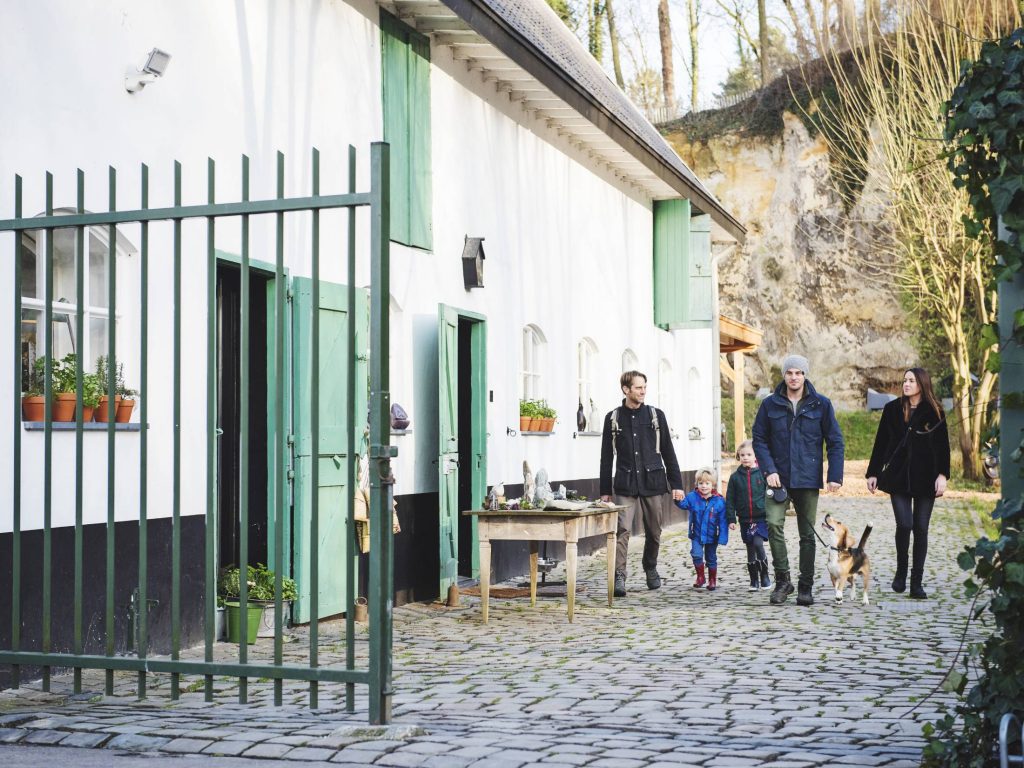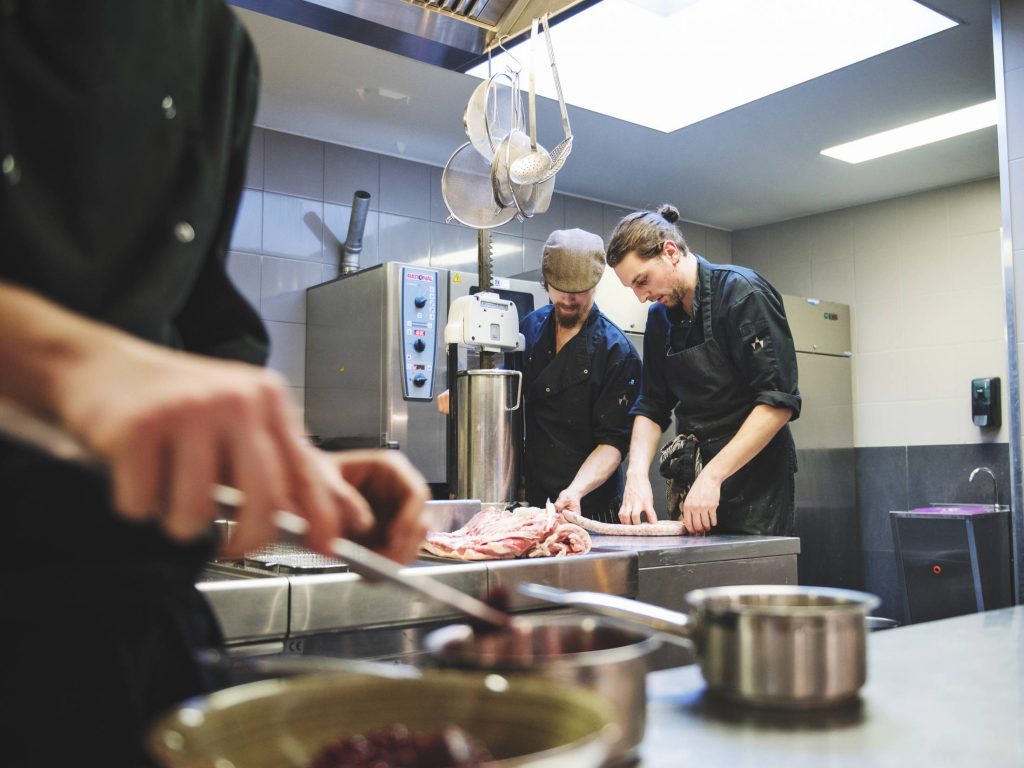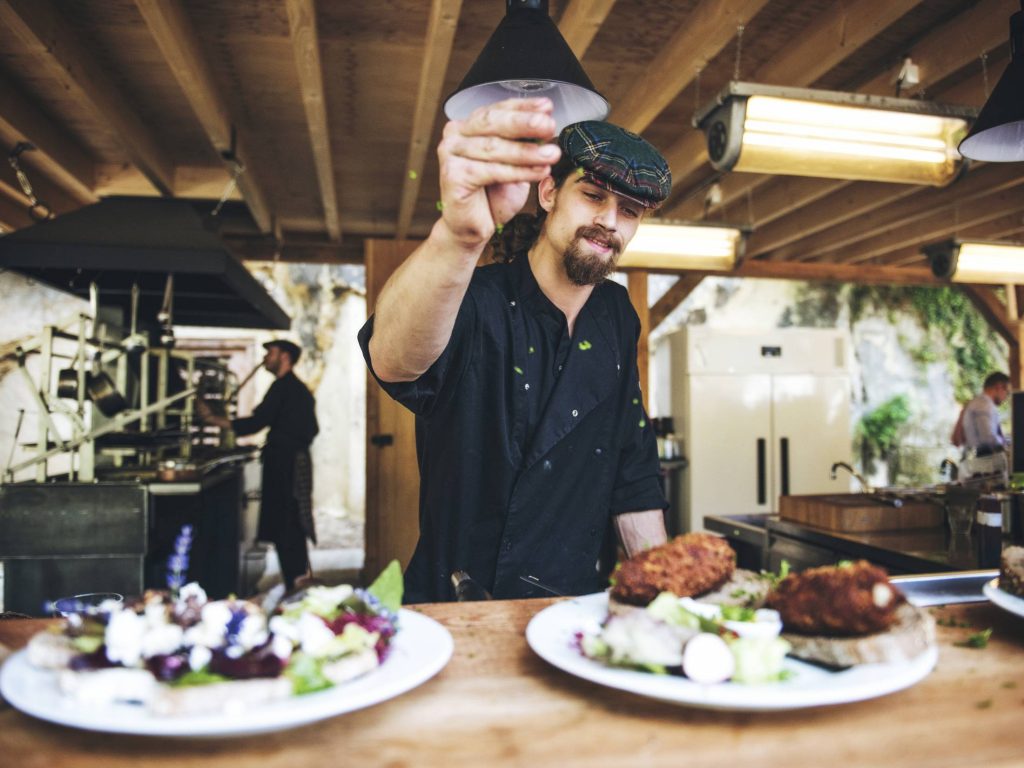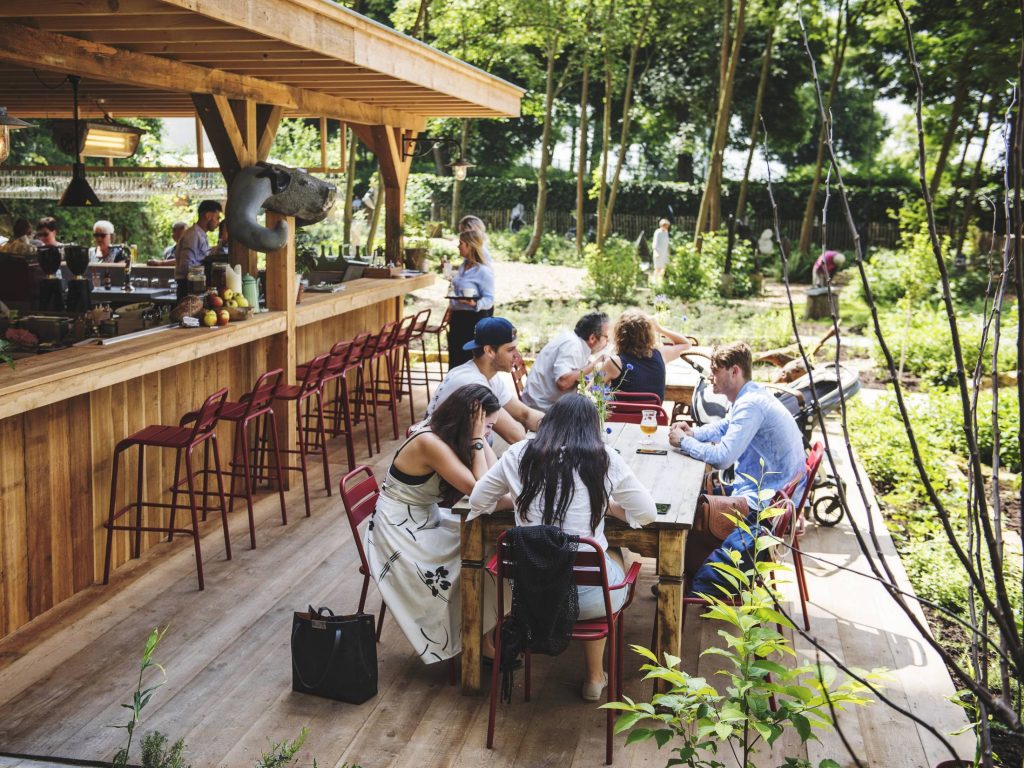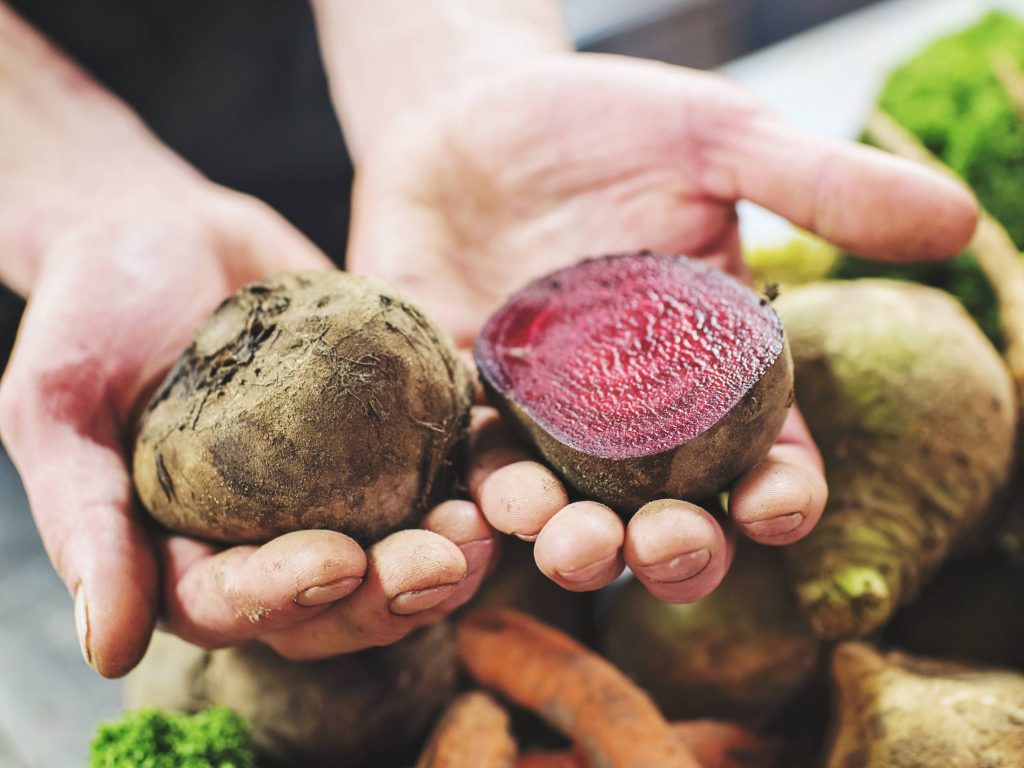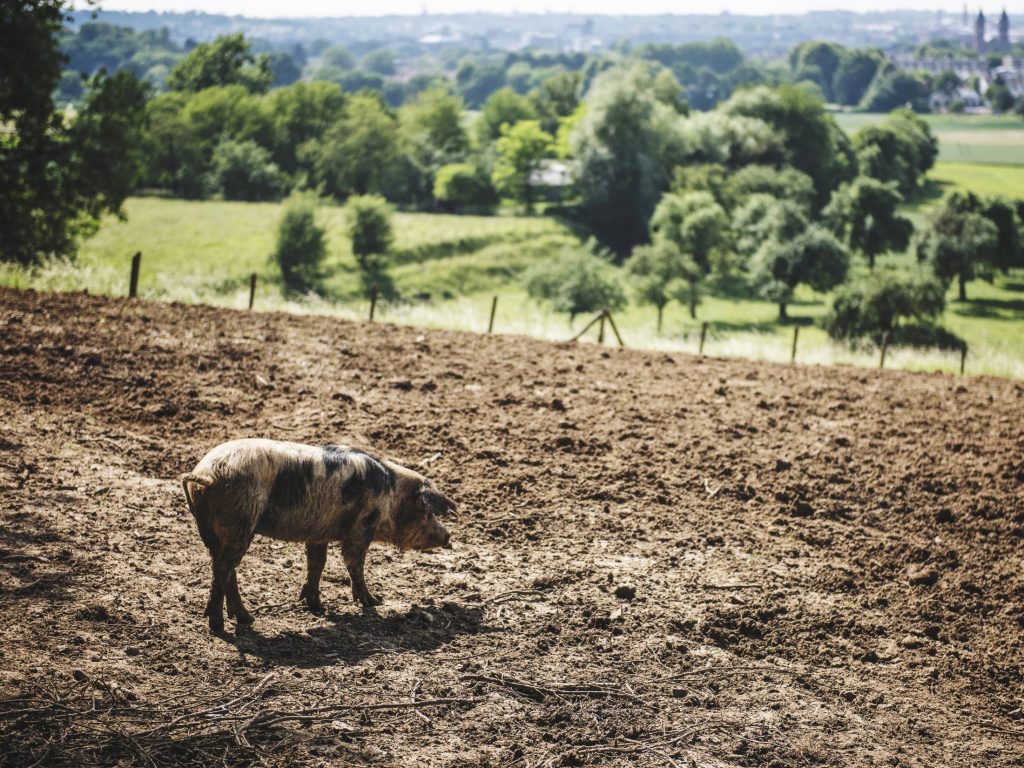Farm, butcher’s shop and restaurant in one
Heerdeberg, Maastricht
On the edge of Maastricht, impressive marl cliffs set the scene for a rural spectacle. As you walk across the Heerdeberg estate, among pigs, cows, and sheep, you’ll enjoy fantastic views over the city and its green outskirts. Over lunch or dinner in the eatery, you can let the beauty of the landscape sink in.
The restaurant at Heerdeberg is the culinary heart of the estate. Farmer, butcher, and chef Coenraad practices one of his three crafts here. From the Bonte Bentheimer pigs roaming nearby, he prepares dishes such as blood sausage and pâté. Everything on the menu comes from the estate or the local region and is homemade in the open kitchen.
Heerdeberg is a beloved place where people live as self-sufficiently as possible — just as the monks did here fifty years ago. The Romans likely built a villa in this agricultural paradise.
Discover
- Taste the five-star pork of farmer Coenraad
- Come and enjoy the regional cuisine
- Enjoy beautiful walks around the estate
- Meet the Bonte Bentheimer pigs, Aberdeen Angus cattle and Mergelland sheep
Fun to know
- Bonte Bentheimer: the primal pig of the Romans
- They are not as fat as you might expect, they have spots on their skin and coarse hair. The Bonte Bentheimers at Heerdeberg are true primal pigs. This breed still resembles the pigs that the Romans brought to this region about two thousand years ago. On the estate, they have all the space and time they need to root around happily and turn entire meadows into mud baths.
- Fruity Heritage
- When the Romans settled in South Limburg, they brought not only pigs and chickens but also many of their own plants. Almonds, apricots, walnuts, cherries, chestnuts, and plums… We owe the presence of these fruits here entirely to the Romans. In line with this fruity heritage, various old apple and pear varieties now grow in the traditional orchard at Heerdeberg.
- Digging is a thing of the past
- When the Romans settled in South Limburg, they brought not only pigs and chickens but also many of their own plants. Almonds, apricots, walnuts, cherries, chestnuts, and plums… We owe the fact that these fruits grow here entirely to the Romans. In keeping with this fruity heritage, various old apple and pear varieties now thrive in the traditional orchard at Heerdeberg.
